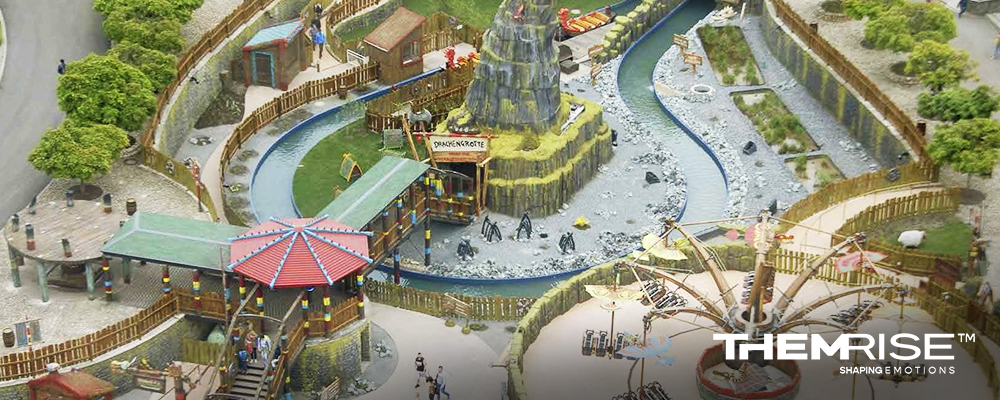
Amusement parks and theme parks are two popular types of entertainment destinations that are often confused because of their similarities, but in fact, they have fundamental differences that set them apart. Both offer fun and excitement, but their focus and overall experience are distinct and cater to different preferences and interests.
In this month’s blog we will explore the differences between the two locations and why these differences are key.
Amusement Parks. Places of excitement and motion.
Amusement parks are renowned for their heart-pounding rides and attractions that cater to adrenaline lovers seeking intense thrills. These parks focus primarily on providing a wide variety of thrill rides. These attractions typically include roller coasters, Ferris wheels, carousels, water slides and other mechanical rides designed to provide intense emotions.
The hallmark of amusement parks is their emphasis on speed, altitude, and twists and turns. Unlike theme parks, amusement parks tend to have less emphasis on storytelling or creating immersive worlds, and more on the technical level and design of their attractions. Most of the time, attractions are presented as individual experiences with no cohesive connection between them.
The main reason to visit an amusement park is to experience intense adventures and adrenaline.
Theme parks. A world of tales.
On the other hand, theme parks are all about immersing visitors in a world of storytelling and thematic experiences.
Theme parks are designed around a specific theme, whether it is a movie, historical era, culture or fantasy. Each section of the park contributes to the overall storyline, ensuring a cohesive and immersive experience. Visitors often feel like they are active participants in a story, rather than mere spectators of individual attractions.
The magic of theme parks lies in their commitment to high-quality storytelling and the creation of a captivating atmosphere. When you step into a theme park, you are transported to another world where fantasy becomes reality and history comes to life. It’s an opportunity to explore and appreciate the art of storytelling while enjoying a range of attractions. All attractions, shows and restaurants are related to the main theme, ensuring a cohesive and immersive experience.
Rather than focusing on pure excitement, theme parks seek to bring visitors in an imaginary or historical world.
Mixed Parks.
While amusement parks and theme parks have their distinct characteristics, there’s a third category of entertainment destinations that bridges the gap between the two: mixed parks. These parks offer visitors the best of both worlds by combining thrilling attractions with immersive theming and storytelling.
What sets mixed parks apart is their commitment to creating immersive environments. Just like theme parks, they have a central theme or storyline that permeates the entire park. Each ride and area are intricately tied to this theme, ensuring that visitors feel like they’re part of a larger narrative.
So, when deciding between an amusement park, a theme park or a mixed one, consider your preferences. If you’re seeking intense thrills and a diverse selection of exciting rides, an amusement park is the way to go. On the other hand, if you crave an immersive adventure where you can become part of a narrative and experience the magic of themed environments, a theme park is the perfect choice. And if you can’t decide between the two, discover the best of both worlds by going to a mixed park.
Understanding these differences will help you make an informed decision when planning your next outing, ensuring that you have the best time possible based on your interests and preferences.
THEMRISE. ONE STOP SHOP FOR THEMING.

